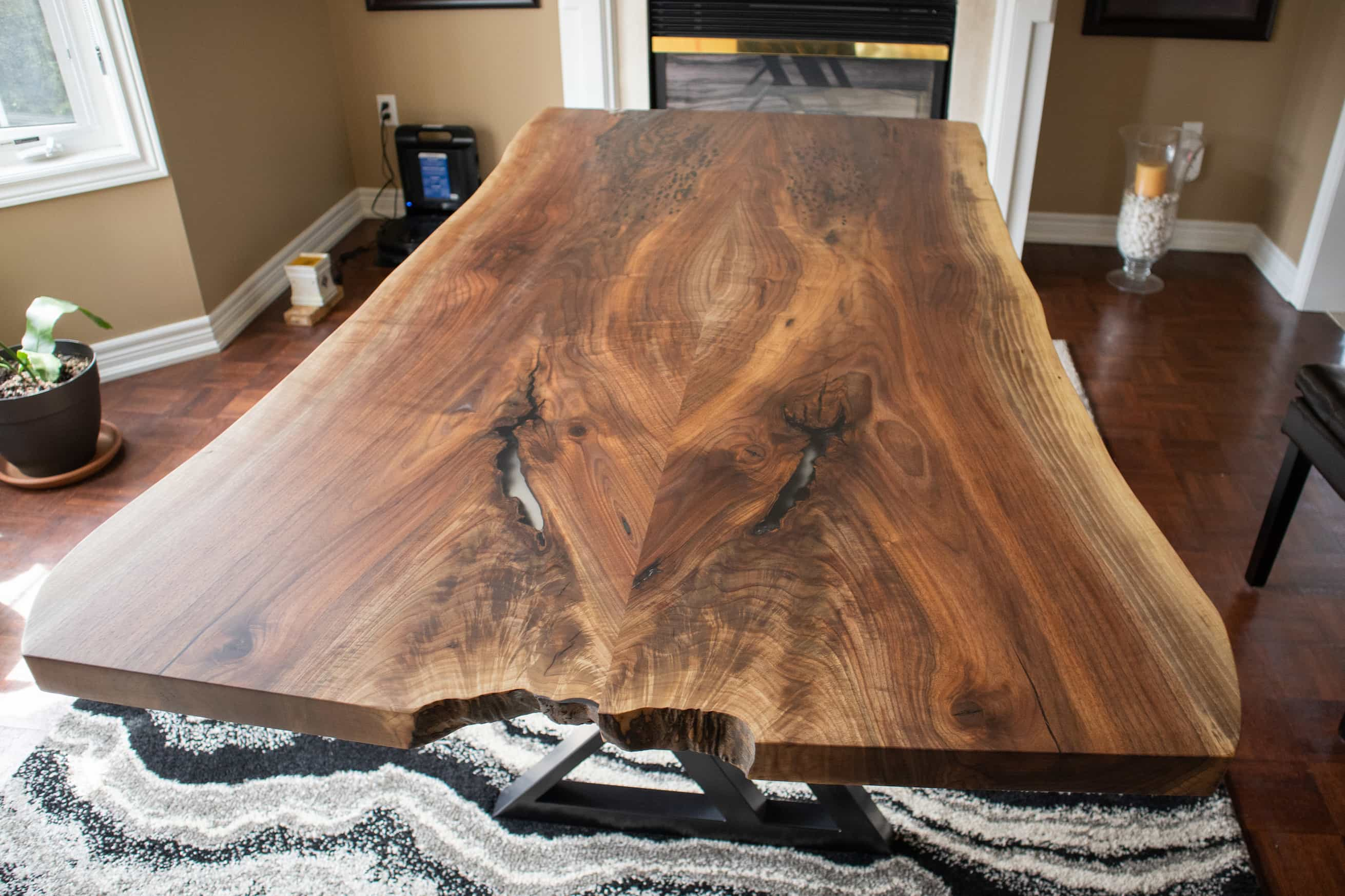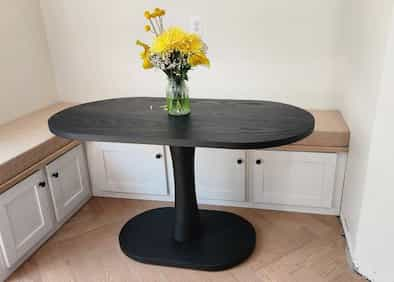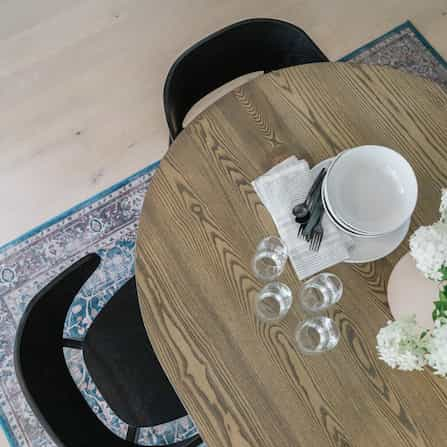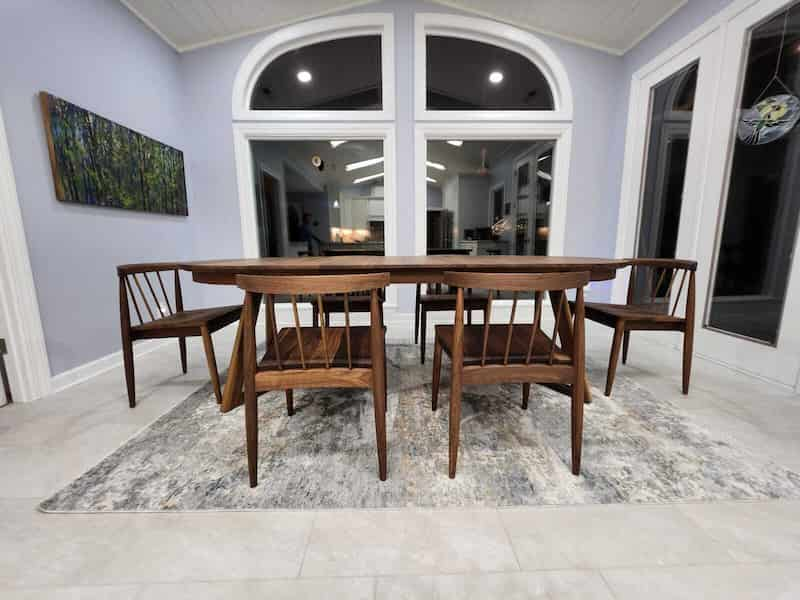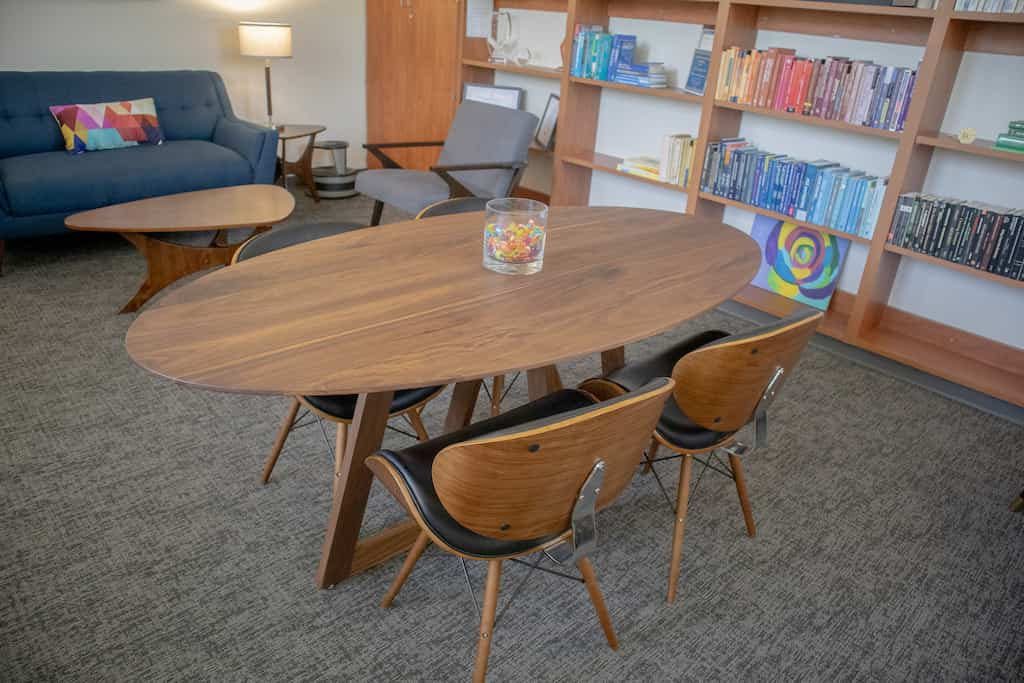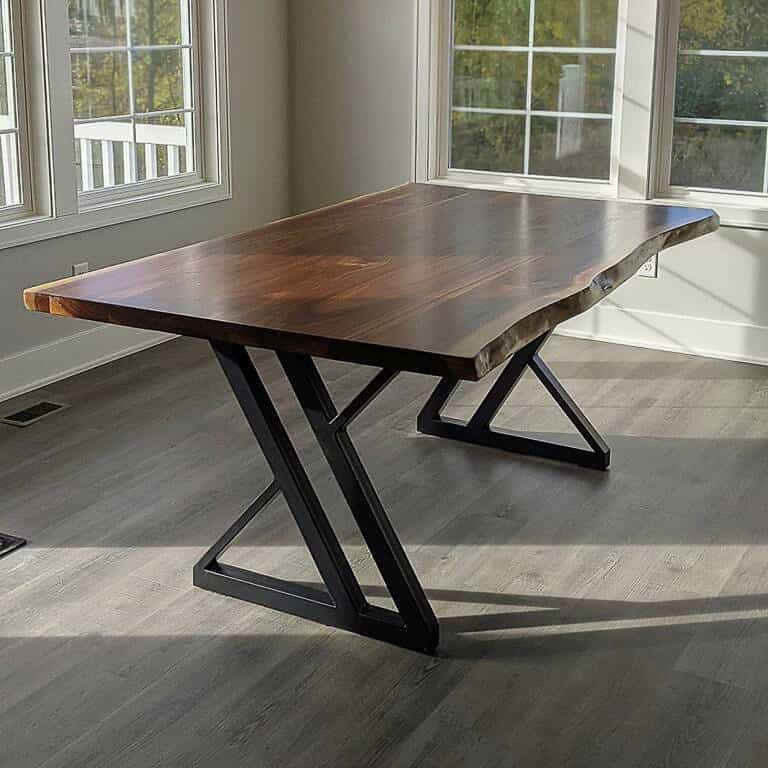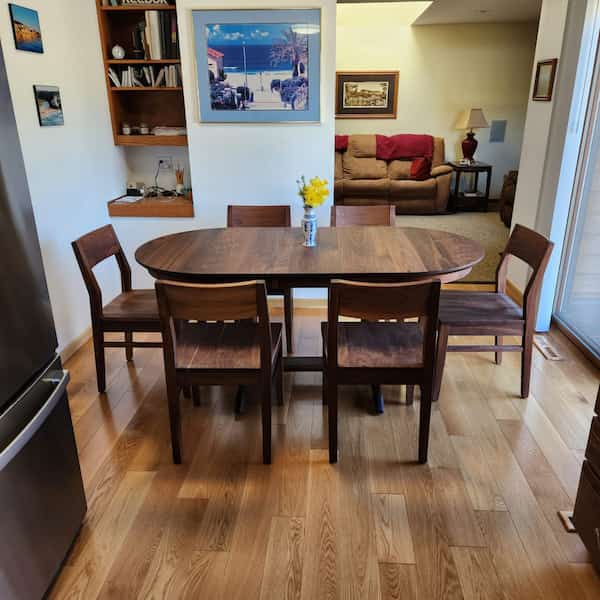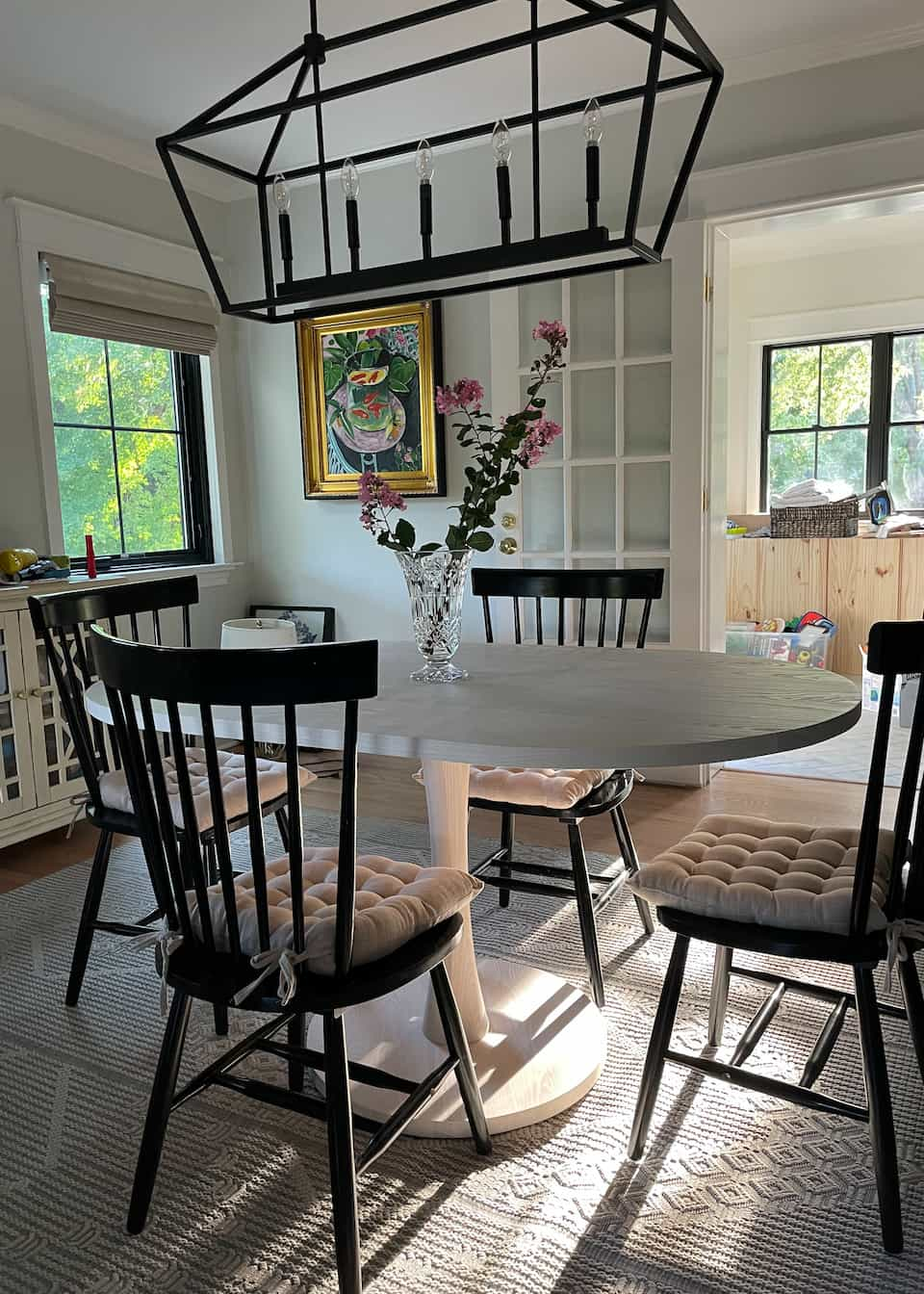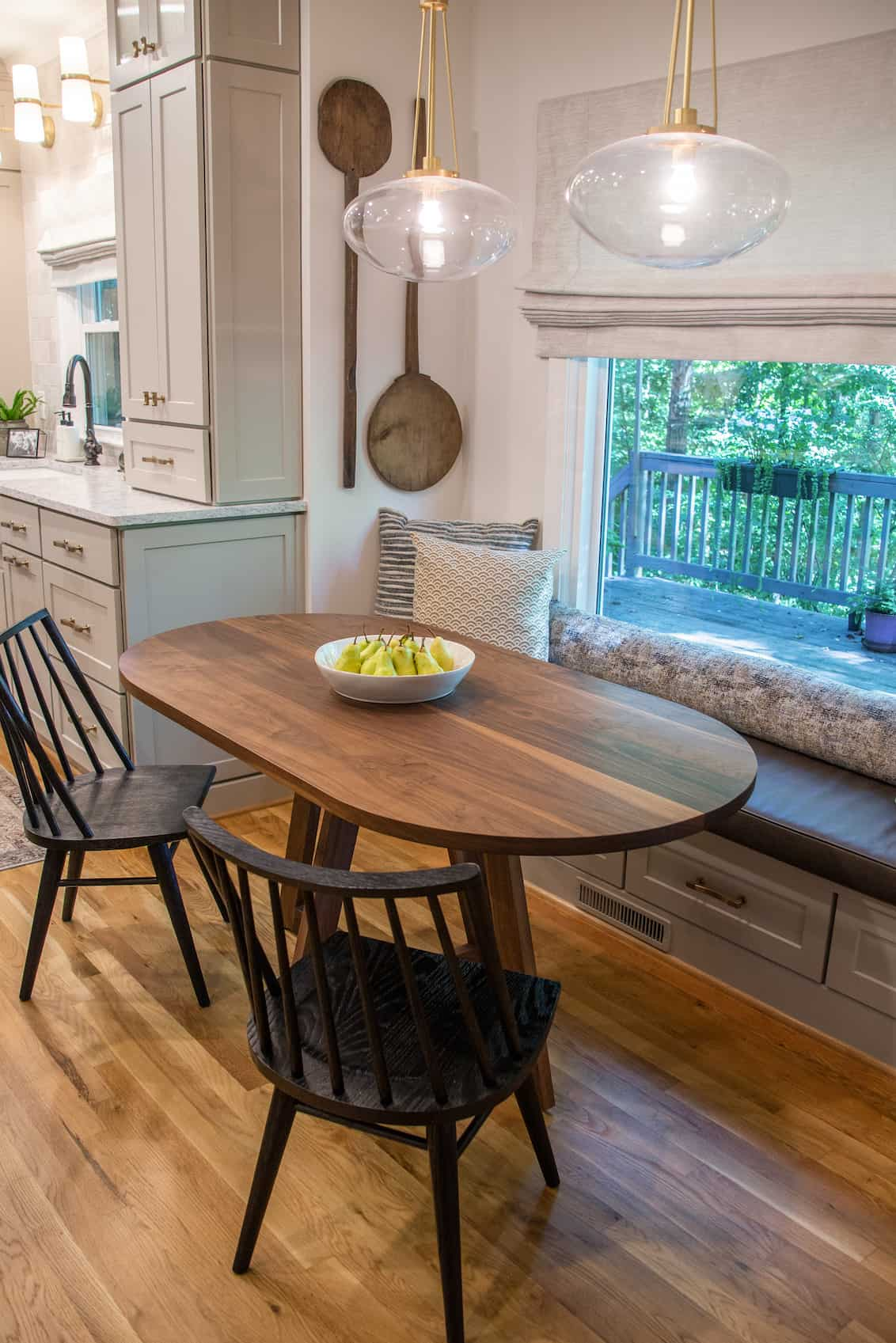An extension dining table is a wonderful, useful, practical dining table. The extendable table can always be the size you need to fit you and your guests perfect every time. It can also be a responsible use of space as it can be smaller when you only need a small table.
At Loewen Design Studios we build lots of extension tables. We build them in many different shapes. We also build 2 different types of extendable tables. That's what this article is about in fact. We build ones that extend on the end, and ones that extend in the middle. We call these End Extension Tables, and Center Extension Tables. They both have their differences, which I'll get into, but first:
How Are The Different Types Of Extension Tables The Same?
They both extend the size of the table when you need it.
Okay so How Are The Different Types Of Extension Tables Different?
Okay so let me talk about these one at a time. Let's start with the Center Extension Table. The Center Extension opens in the middle to allow for leaves to drop in. The main table is actually built in 2 separate halves, with a subtle seam running between them. The grain of the wood runs across the table, which hides this seam. The grain in this direction also keeps the extension and table aligned so your table stays great.

Center Extension Tables can be nearly any shape. This is the only type of extension table we offer for round tables and oval tables. Rectangular tables and square tables are also both available as Center Extension Tables. One thing to note is that when they extend a square table will become a rectangle and a round will become a racetrack.
These tables are also very flexible, offering the ability to easily add as many leaves as you want. They can have only one extension added, or if you wanted as many as 4. This gives a lot of flexibility in the size of your table on an everyday basis. The nature of the grain running across the table allows the table to look the same no matter how many leaves you have in. Center Extensions are also able to be quite stable, particularly on a round or a square table. This is due to the table opening and moving apart, the legs are able to do so as well. This creates a larger footprint as the table gets larger, keeping it stable. And as we all know, everyone wants a stable table.

End Extension tables are a little different that Center Extension tables. End Extension tables have leaves added to the ends of the table. This allows the table to function just like a regular table without the extensions. The grain of the wood runs the length of the table like any other table. The leaves though have the grain run across the table, creating a breadboard effect. This makes the table look a little different with or without leaves.
End Extension tables can really only be made from square or rectangular tables. Round tables would have to have leaves with odd shapes that wouldn't work very well. Square End Extension tables can also have issues with stability. If the main table is too small or the leaves are too big the legs may be too far from the ends when the table's extended. Rectangular tables however are perfect candidates for end extensions.
End Extension tables will always have 2 leaves, one on each end. Due to the nature of how the table changes its look with the leaves, you'll often want to use both leaves. This will also help physically and visually balance the table.
WHY WOULD I WANT ONE INSTEAD OF THE OTHER?
End Extension Dining Tables are best for tables that aren't usually extended. Center Extension Tables are better for tables that are more often extended. Center Extensions offer a bit more flexibility, while End Extension tables are a little better without extensions. They can both be wonderful in different settings.
















